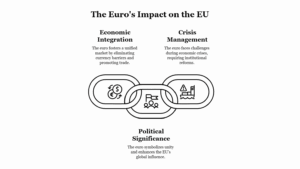Canada’s evolution into a plural society is a result of its unique historical, cultural, and social development. A plural society is characterized by a diversity of cultural, ethnic, linguistic, and religious groups, all coexisting within a larger social and political framework. Canada’s development as a plural society is influenced by several key factors, including its colonial history, immigration patterns, political structure, and policies of inclusion and multiculturalism.
Colonial Foundations
Canada’s colonial history began with the French and later British colonization, both of which played a significant role in shaping the multicultural character of the country. The French initially settled in Canada in the 17th century, establishing a presence that lasted until 1763 when Canada became a British colony. During the colonial era, the French and English settlers coexisted, though tensions arose, particularly between the two groups. However, they both contributed to Canada’s evolving social fabric. The French-speaking Quebecois, along with the English-speaking settlers, became the two main linguistic groups that formed the foundation of Canada’s plural society.
Indigenous Peoples
The indigenous peoples of Canada, including First Nations, Inuit, and Métis, have been a vital part of the country’s social and cultural landscape for thousands of years. These groups contributed to the pluralistic character of Canadian society long before European colonization. However, their roles and status in Canadian society have been complicated by colonial policies such as the Indian Act, forced assimilation programs, and residential schools, which sought to marginalize indigenous cultures and languages. Despite this history, indigenous communities have maintained a distinct cultural identity and have been active in efforts for recognition, reconciliation, and self-determination.
Immigration
A key factor in Canada’s evolution into a plural society is immigration. Since the 19th century, Canada has been a destination for immigrants from various parts of the world. Early waves of immigration came from Europe, particularly the British Isles, Ireland, and France, followed by larger numbers from Eastern and Southern Europe. The 20th century saw a shift in immigration patterns, with significant influxes from Asia, the Caribbean, Africa, and Latin America. This global influx of immigrants has contributed to Canada’s ethnic and cultural diversity.
Official Multiculturalism Policy
One of the defining moments in Canada’s journey to becoming a plural society came with the implementation of official multiculturalism in the 1970s. The Canadian government officially adopted a policy of multiculturalism under Prime Minister Pierre Trudeau in 1971. This policy recognized the country’s cultural diversity as a source of strength and aimed to ensure that immigrants and minority groups could retain their distinct cultural identities while also integrating into Canadian society. In 1982, multiculturalism was further entrenched in the Canadian Charter of Rights and Freedoms, which guaranteed equal rights for all citizens, regardless of race, culture, or religion.
The Role of Language
Canada’s bilingualism is another crucial aspect of its plural society. The official recognition of English and French as the country’s two official languages in the Official Languages Act (1969) ensured that both the English-speaking majority and French-speaking minority, particularly in Quebec, could participate equally in government, education, and other public spheres. This linguistic duality has been a cornerstone of Canada’s pluralism, providing a framework for the accommodation of linguistic diversity.
Indigenous Reconciliation and Multiculturalism Today
In recent decades, the concept of pluralism in Canada has been expanded to include greater recognition of indigenous peoples and their rights. The Truth and Reconciliation Commission, which investigated the historical abuses suffered by indigenous peoples, has played a crucial role in fostering dialogue and understanding. Canada has also seen the rise of indigenous organizations advocating for land rights, cultural preservation, and political representation. The government has taken steps toward reconciliation, such as implementing the United Nations Declaration on the Rights of Indigenous Peoples (UNDRIP) and increasing representation of indigenous peoples in political institutions.
Moreover, Canada continues to embrace multiculturalism through policies that support the integration of new immigrants, protect minority rights, and celebrate diversity. Programs such as the Canadian Multiculturalism Act (1988) and various provincial initiatives promote inclusion, foster cross-cultural understanding, and combat discrimination.
Conclusion
Canada’s evolution into a plural society is a product of its colonial history, indigenous cultures, and ongoing immigration patterns. It is a dynamic process that reflects both challenges and triumphs in creating a cohesive and inclusive society. The Canadian model of pluralism, characterized by bilingualism, multiculturalism, and indigenous rights, continues to evolve as the country seeks to balance the coexistence of multiple cultural identities with a unified national framework.







Leave a Reply